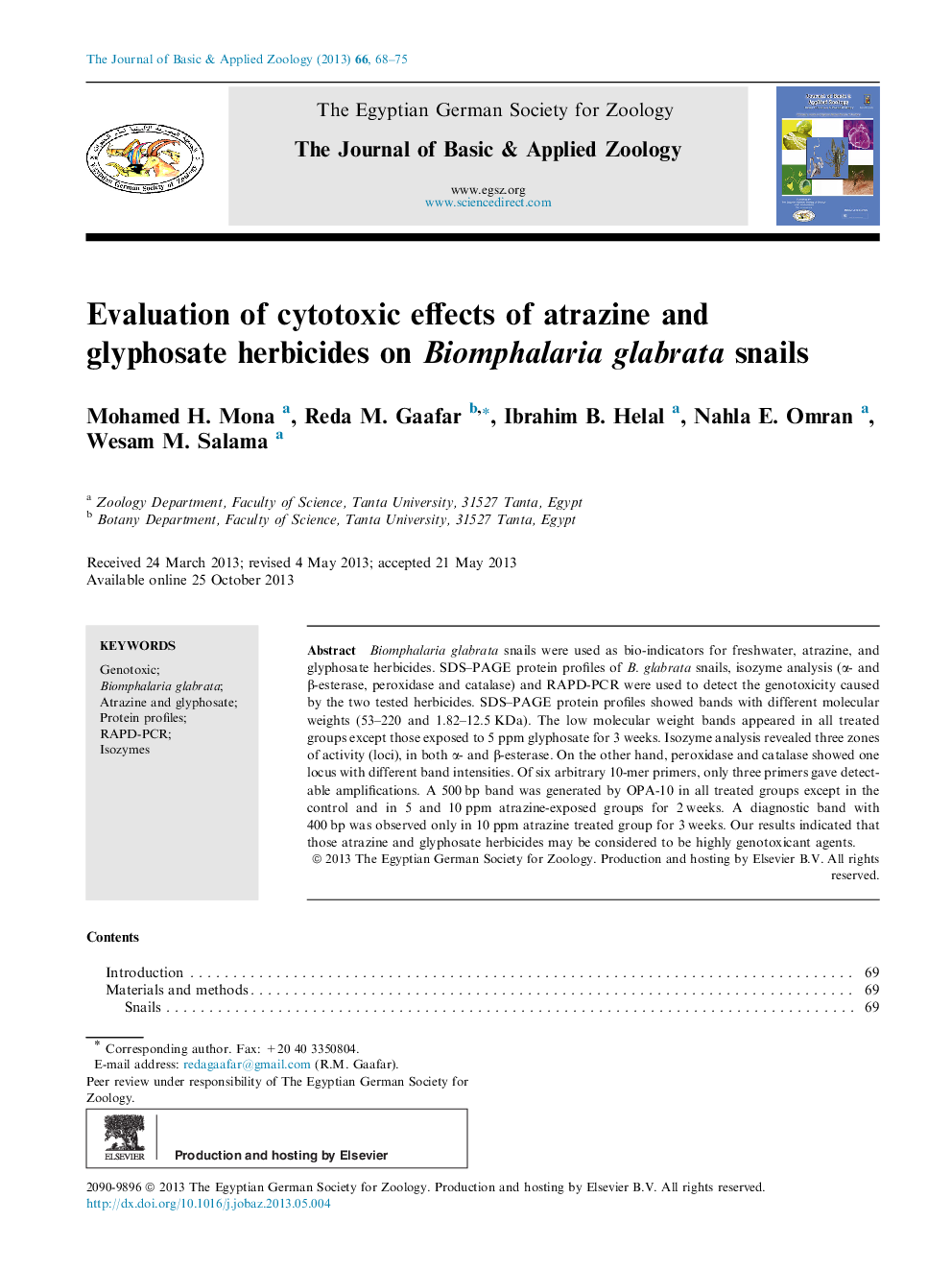| Article ID | Journal | Published Year | Pages | File Type |
|---|---|---|---|---|
| 4493563 | The Journal of Basic & Applied Zoology | 2013 | 8 Pages |
Biomphalaria glabrata snails were used as bio-indicators for freshwater, atrazine, and glyphosate herbicides. SDS–PAGE protein profiles of B. glabrata snails, isozyme analysis (α- and β-esterase, peroxidase and catalase) and RAPD-PCR were used to detect the genotoxicity caused by the two tested herbicides. SDS–PAGE protein profiles showed bands with different molecular weights (53–220 and 1.82–12.5 KDa). The low molecular weight bands appeared in all treated groups except those exposed to 5 ppm glyphosate for 3 weeks. Isozyme analysis revealed three zones of activity (loci), in both α- and β-esterase. On the other hand, peroxidase and catalase showed one locus with different band intensities. Of six arbitrary 10-mer primers, only three primers gave detectable amplifications. A 500 bp band was generated by OPA-10 in all treated groups except in the control and in 5 and 10 ppm atrazine-exposed groups for 2 weeks. A diagnostic band with 400 bp was observed only in 10 ppm atrazine treated group for 3 weeks. Our results indicated that those atrazine and glyphosate herbicides may be considered to be highly genotoxicant agents.
